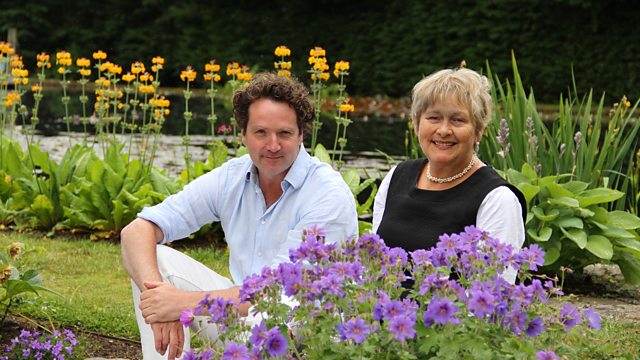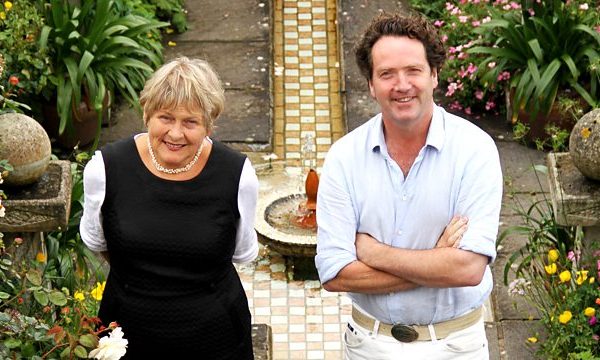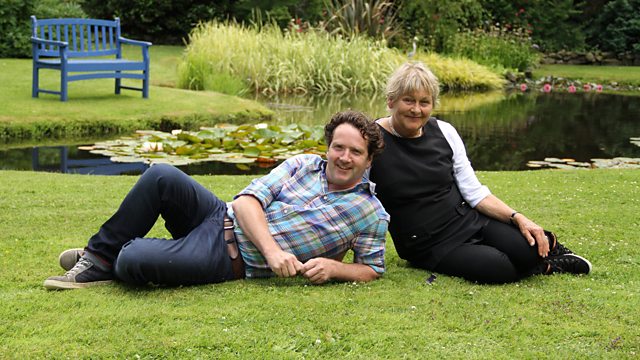Capability Brown’s Unfinished Garden: Capability Brown is known as the founder of landscape design. In the 1700s, he created some of the most magnificent landscapes in England. He travelled the length and breadth of the country, improving more than 200 of the greatest estates in the land for some of the most influential people of the 18th century.
But there is one plan that never got off the drawing board. The only land Capability ever owned was in Fenstanton, Cambridgeshire, but he died before he could carry out any plans for his own garden. Today, it is a piece of flat land bisected by the A14 dual carriageway.
Landscape designer and Gardeners’ Question Time regular Bunny Guinness travels across England to some of Capability’s finest landscapes – Blenheim, Burghley, Milton Abbey and Castle Ashby – to understand what he might have created. Rediscovering plans and letters, and using the latest technology, Capability Brown’s unfinished garden is brought to life.
Capability Brown’s Unfinished Garden
Capability Brown is widely considered one of the most influential landscape designers in the history of England. Born in 1716, Brown worked on hundreds of estates throughout the country, transforming them from formal, symmetrical gardens into naturalistic, picturesque landscapes. Brown’s innovative techniques, including the creation of winding lakes, the planting of trees in clusters, and the creation of undulating terrain, had a profound impact on the English landscape gardening movement. However, one of Brown’s most significant works, his own garden at Fenstanton Manor in Cambridgeshire, remains unfinished to this day.
Historical background
To understand the significance of Capability Brown’s unfinished garden, it is essential to have some background on the landscape gardening movement in England. In the 18th century, there was a growing interest in creating gardens that mimicked the natural landscape. This movement was driven in part by a desire to show off the owner’s wealth and status, as well as a belief that nature was the ultimate source of beauty.
Brown was one of the most prominent landscape designers of this era, and his work revolutionized the field. His approach was characterized by a “naturalistic” style that sought to create the illusion of an untouched landscape. Brown achieved this by removing formal elements such as symmetrical planting beds and straight paths and replacing them with meandering lakes, rolling hills, and winding paths. Brown’s style was so influential that it came to be known as the “English landscape garden.”
Capability Brown’s unfinished garden
Despite his success in transforming the gardens of his clients, Brown’s own garden at Fenstanton Manor was never completed. The garden was designed in the 1760s and featured several of Brown’s trademark features, including a large lake, undulating terrain, and carefully placed clumps of trees. However, Brown’s plans for the garden were interrupted by a dispute with his client, the Bishop of Lincoln, over payment.
As a result of the dispute, Brown abandoned the project, and the garden remained unfinished. The lake, which was the centerpiece of the design, was left half-dug, and the terrain remained rough and unfinished. The garden was eventually sold to a new owner, who attempted to complete it, but without Brown’s vision and guidance, the garden was never fully realized.
Significance of Capability Brown’s unfinished garden
The unfinished garden at Fenstanton Manor is significant for several reasons. Firstly, it is a representation of Brown’s legacy as a landscape designer. Although Brown’s work is celebrated for its naturalistic style and emphasis on the natural landscape, it is important to remember that he was also a skilled craftsman who carefully designed each aspect of his gardens. The unfinished garden at Fenstanton Manor offers a glimpse into Brown’s creative process and allows us to see the level of detail and planning that went into his designs.
Secondly, the unfinished garden is an example of the challenges of landscape restoration. While there have been attempts to complete the garden, these efforts have been hampered by the lack of detailed plans and the absence of Brown’s expertise. This highlights the difficulty of restoring historic gardens and the importance of preserving the original design as much as possible.
Finally, the garden is a site of historical and cultural significance. As one of Brown’s few surviving gardens, it provides valuable insight into the development of landscape gardening in England. It also serves as a reminder of Brown’s impact on the country’s cultural heritage and the enduring legacy of his work.
Challenges and opportunities for the completion of Capability Brown’s garden
Completing Capability Brown’s garden at Fenstanton Manor presents a range of challenges. One of the main obstacles is the lack of detailed plans for the garden. Without a clear understanding of Brown’s vision, it is difficult to recreate the garden as he intended it to be. Additionally, the rough terrain and half-dug lake present technical challenges that must be addressed.
Another significant challenge is funding. Restoring historic gardens is a costly endeavor, and without adequate funding, it is difficult to make progress. However, there are opportunities for collaboration and funding. The garden could be used as a site for research and experimentation in landscape restoration, and partnerships with local universities or organizations could provide resources and expertise.
Conclusion
Capability Brown’s unfinished garden at Fenstanton Manor is a testament to his skill and creativity as a landscape designer. It is a valuable site of historical and cultural significance, and efforts to restore the garden are essential for preserving this heritage. While there are significant challenges to completing the garden, there are also opportunities for collaboration and innovation. By working together, we can ensure that this important piece of England’s landscape history is preserved for future generations.
FAQs
- Who was Capability Brown?
- Capability Brown was a prominent landscape designer in 18th-century England who revolutionized the field of landscape gardening.
- What is the English landscape garden?
- The English landscape garden is a naturalistic style of garden design that seeks to create the illusion of an untouched landscape.
- Why was Capability Brown’s garden at Fenstanton Manor never completed?
- Brown had a dispute with his client, the Bishop of Lincoln, over payment, which led him to abandon the project.
- What challenges must be overcome to complete the garden?
- The lack of detailed plans for the garden and technical challenges such as the rough terrain and half-dug lake are significant obstacles.
- Why is the garden significant?
- The garden is a representation of Brown’s legacy, an example of the challenges of landscape restoration, and a site of historical and cultural significance.




